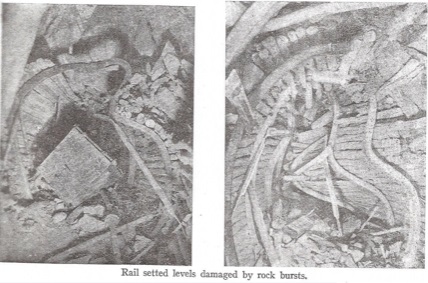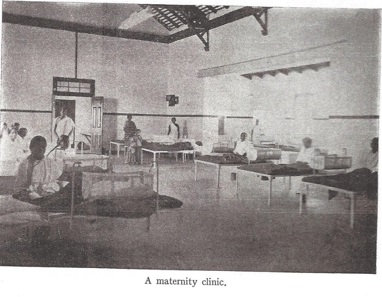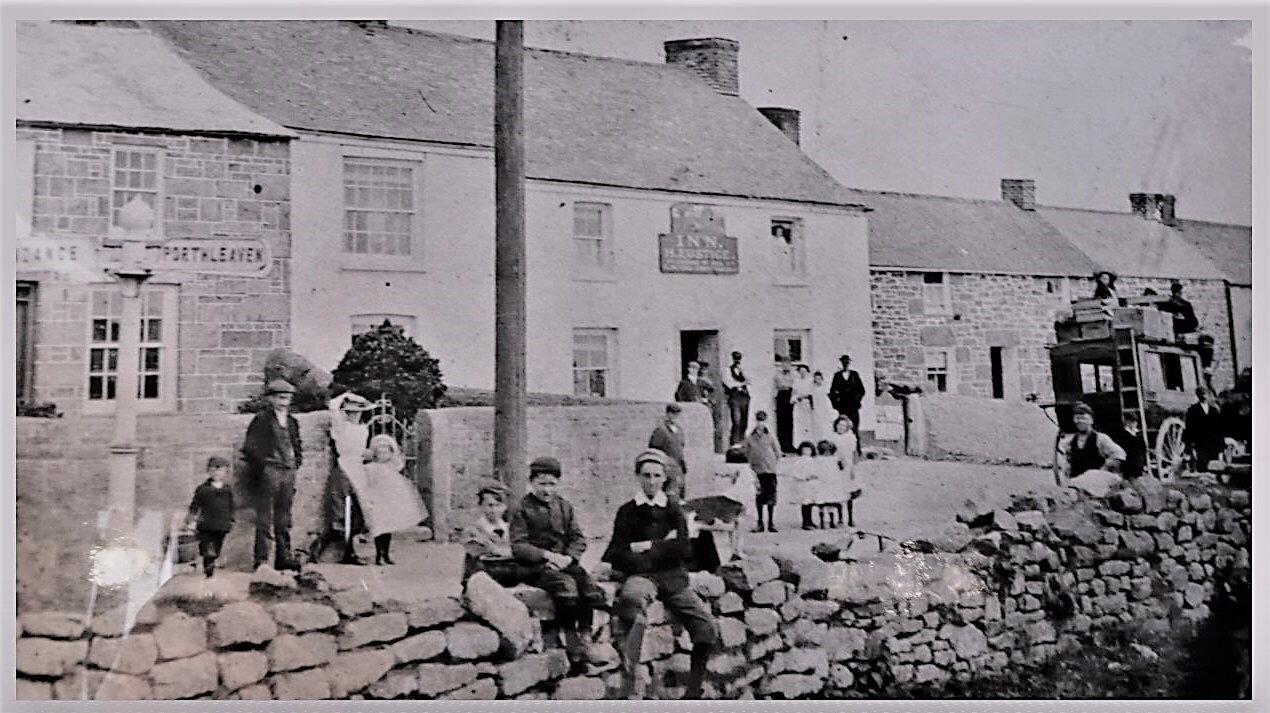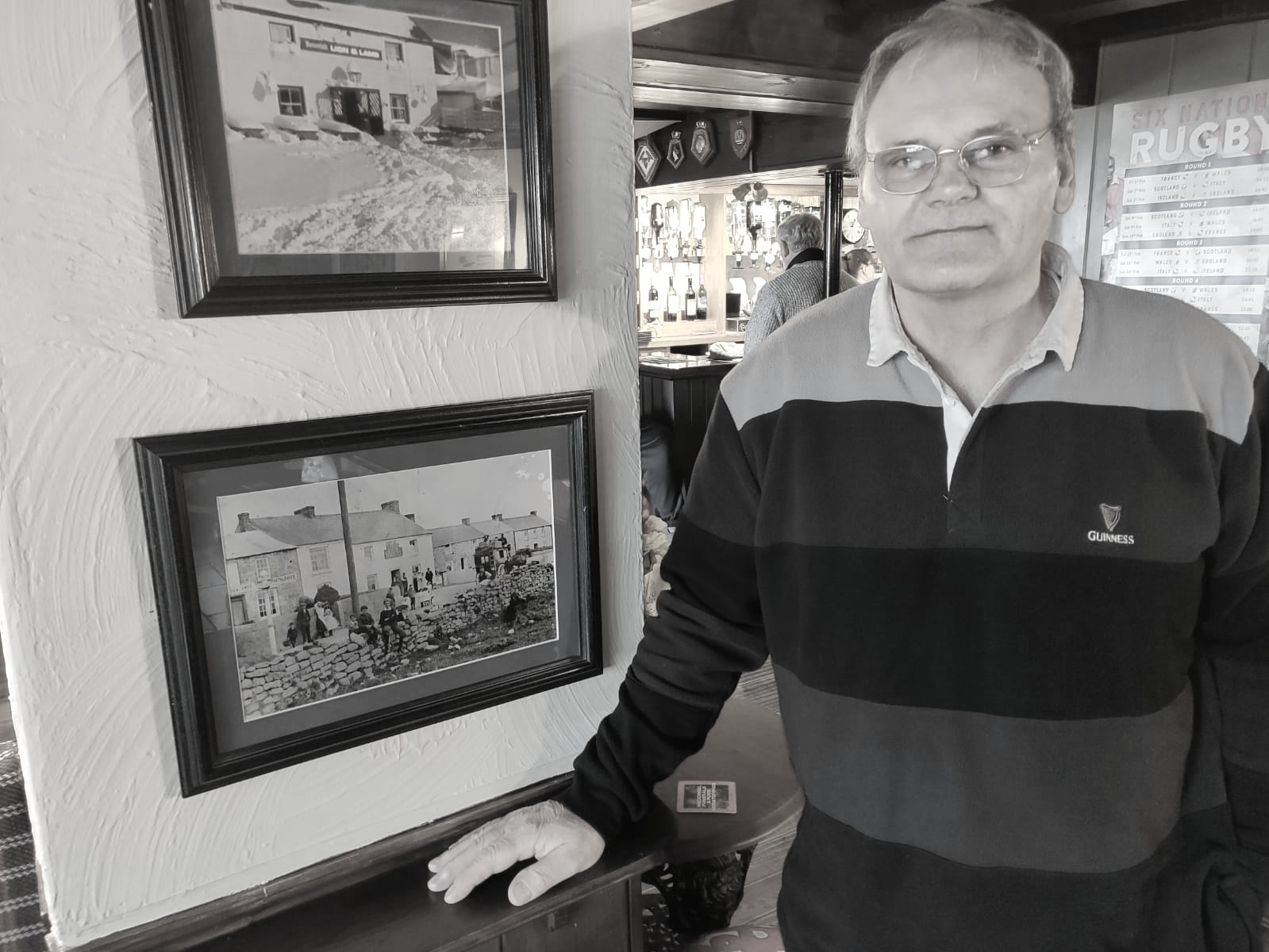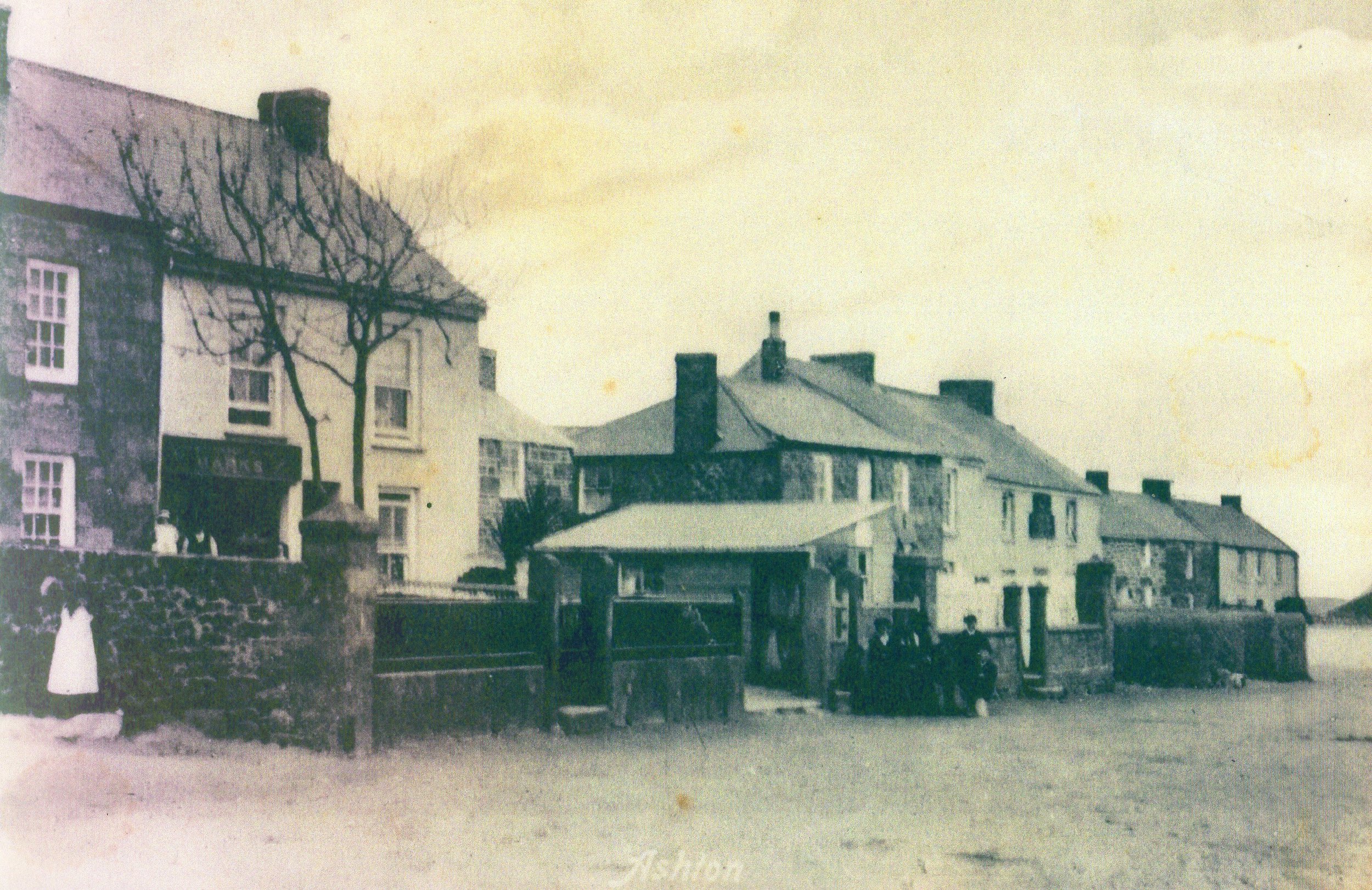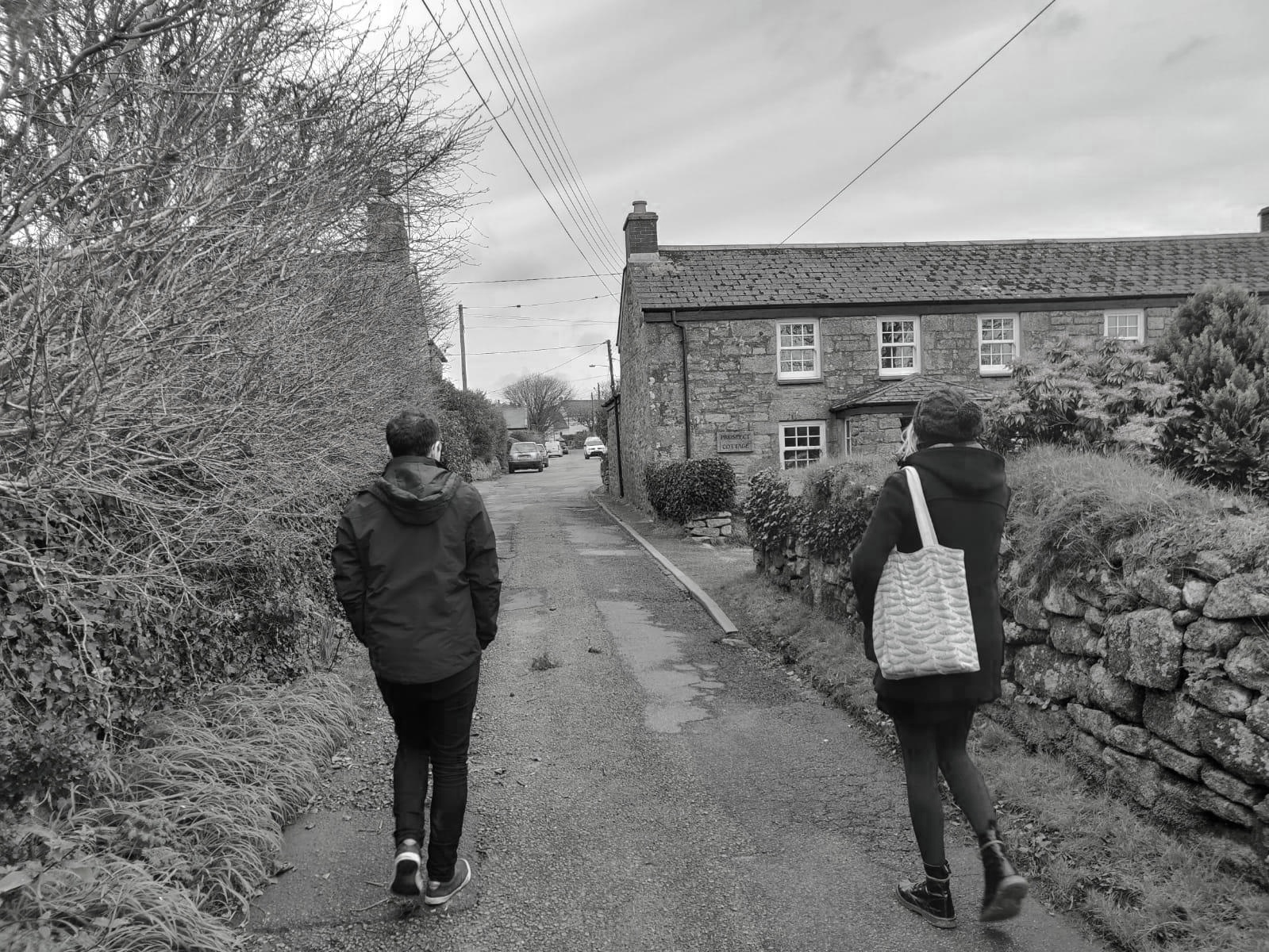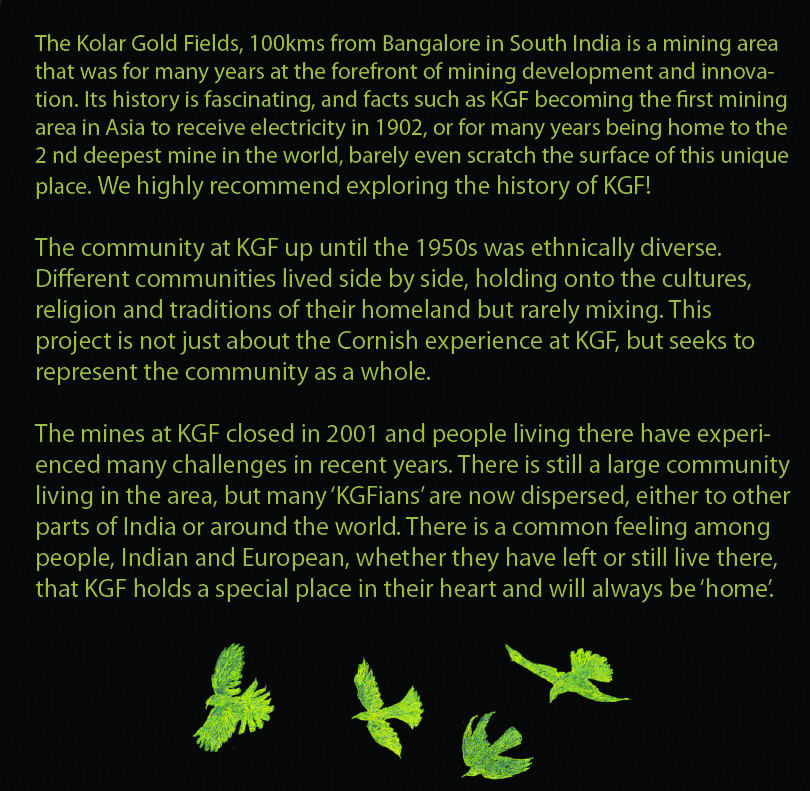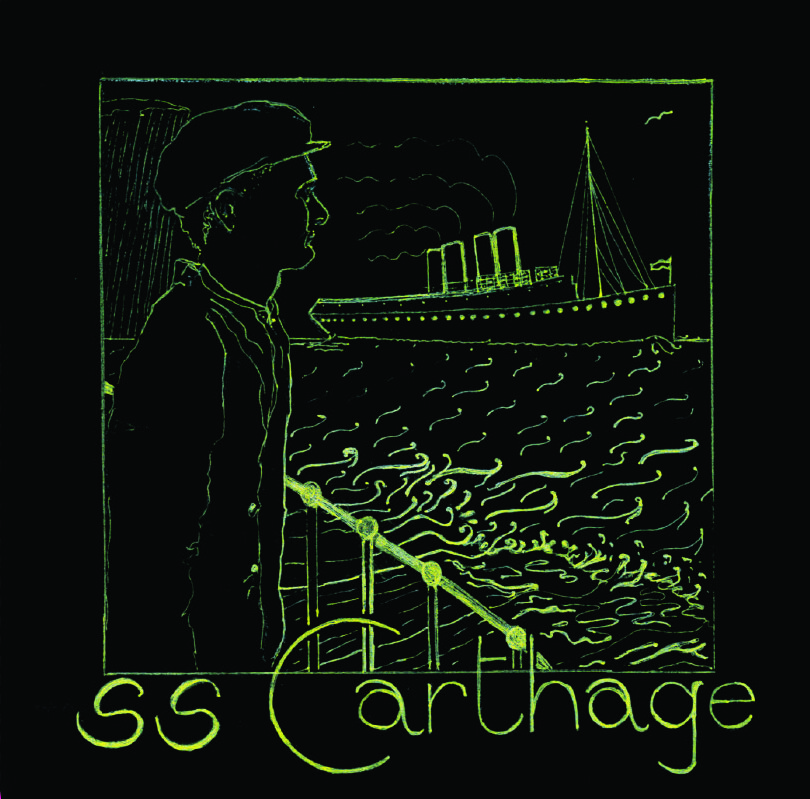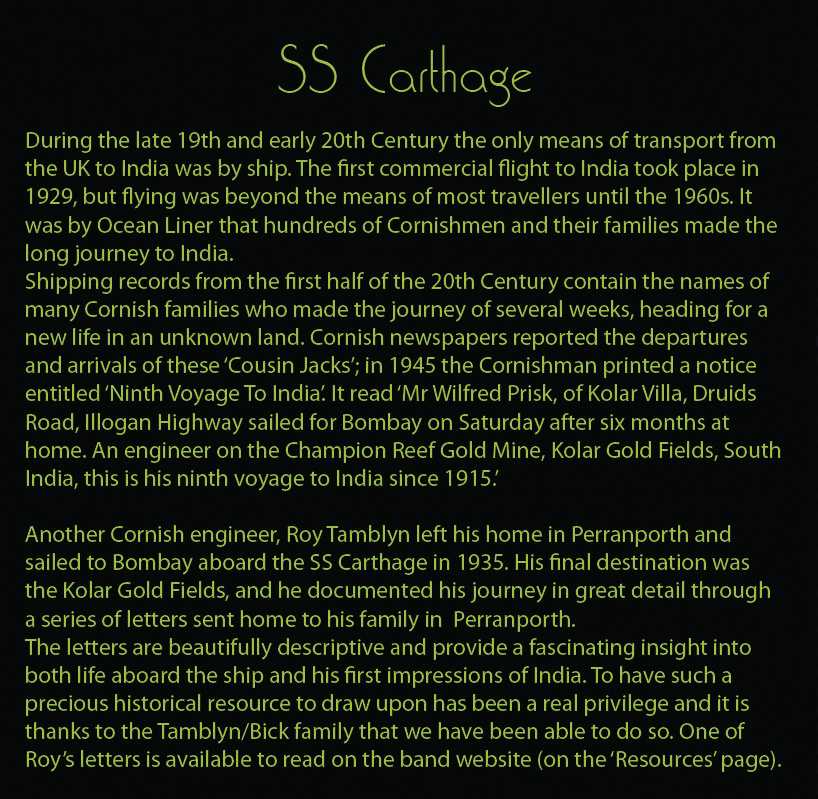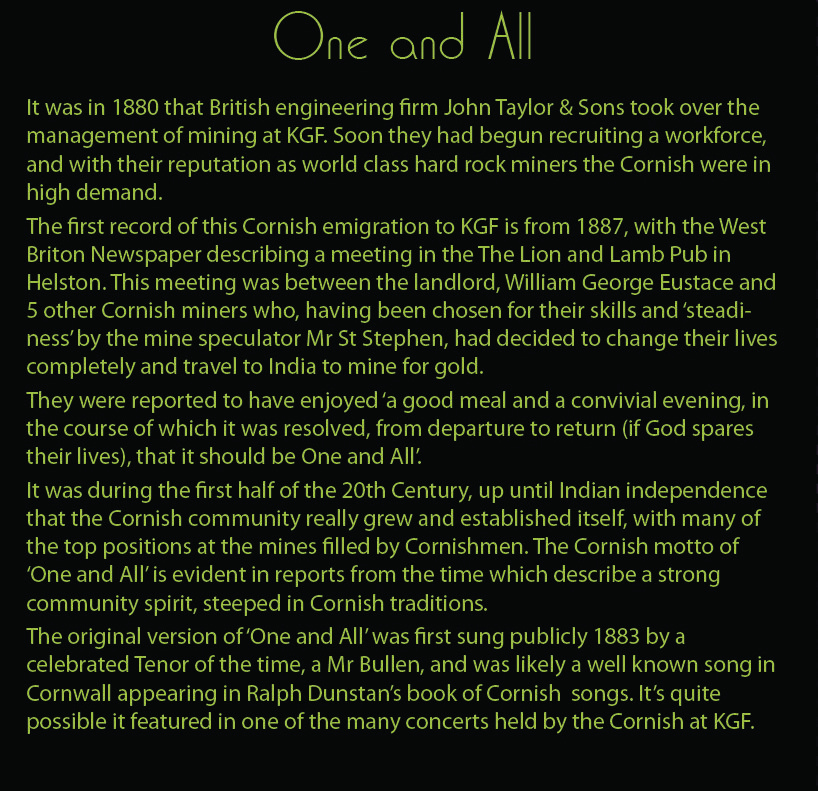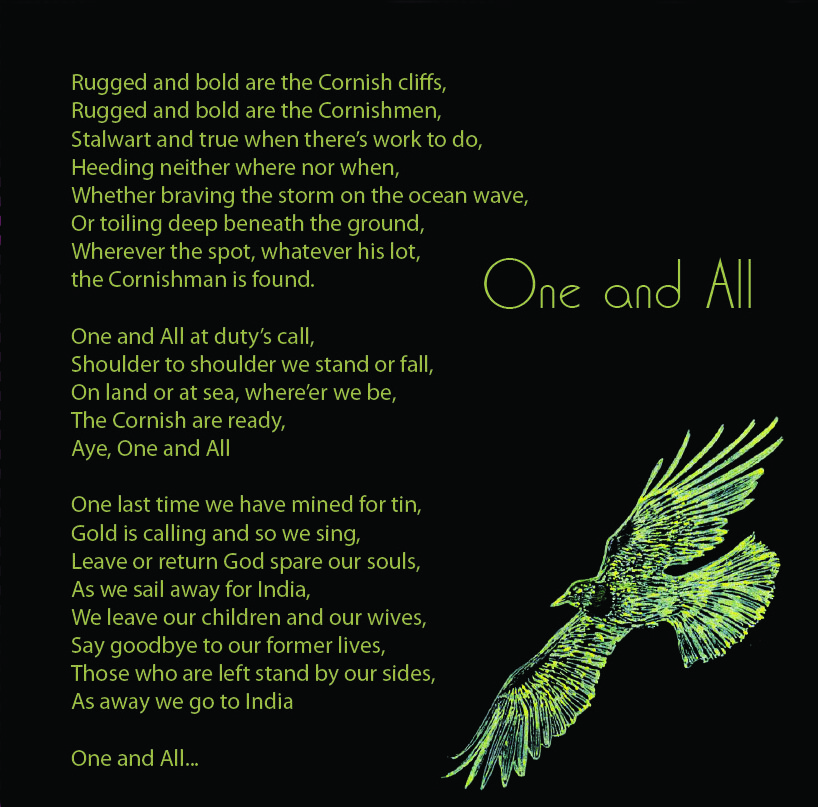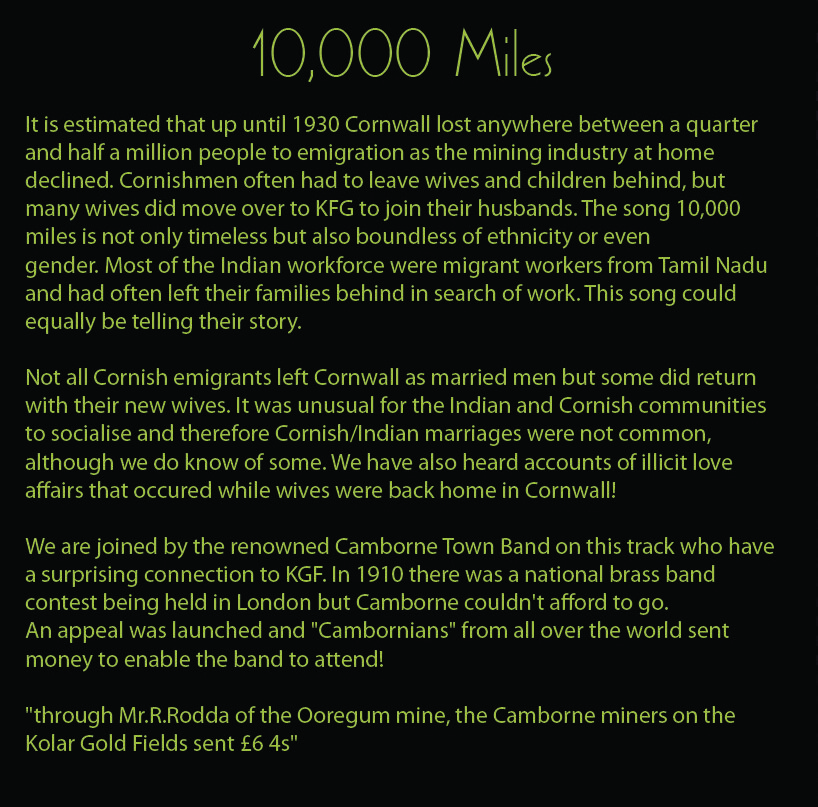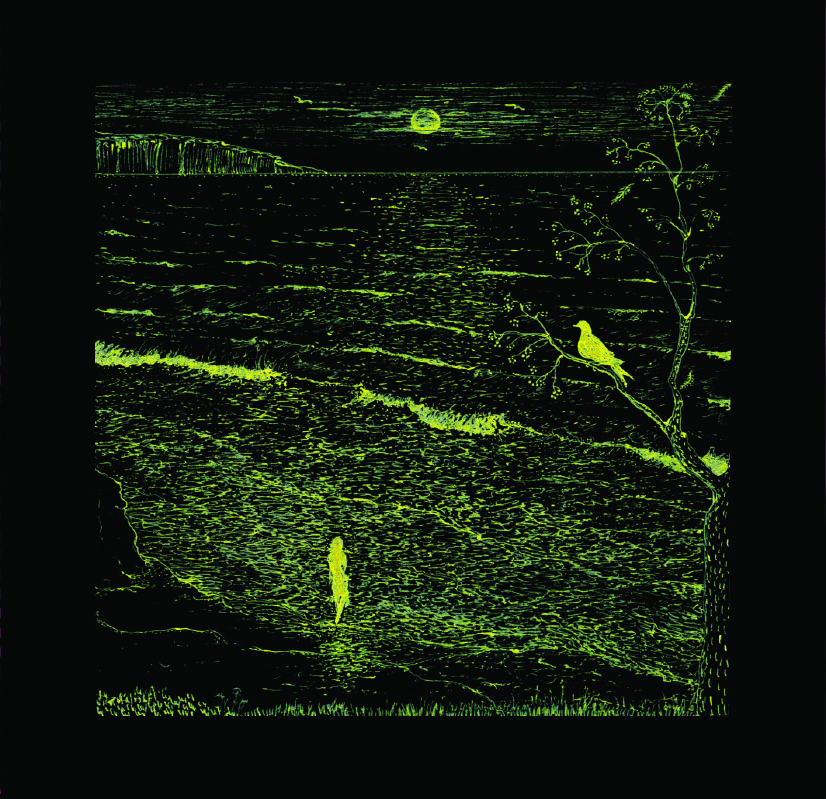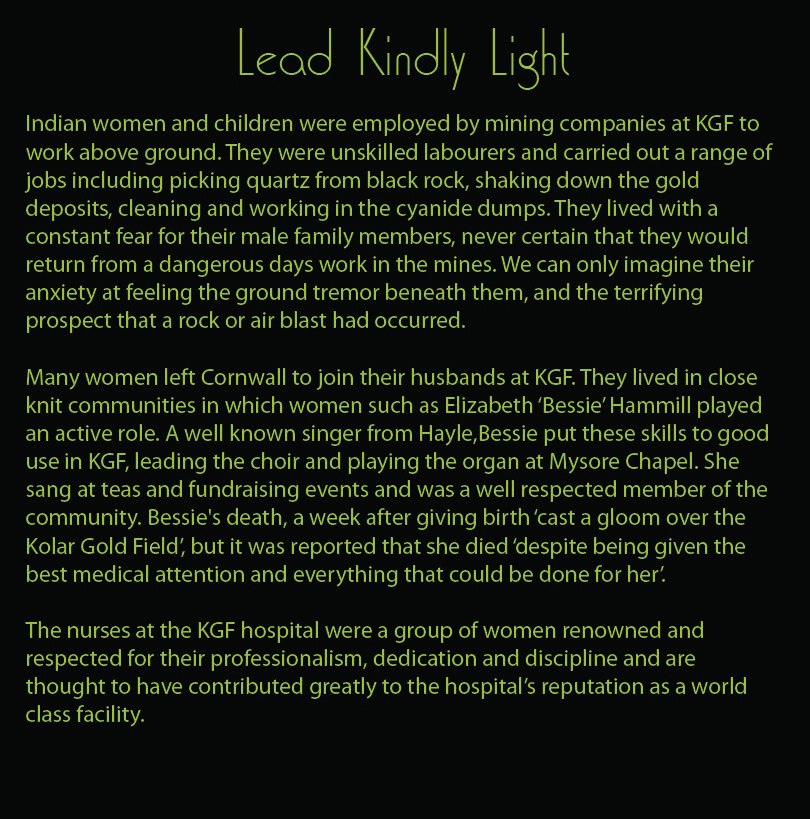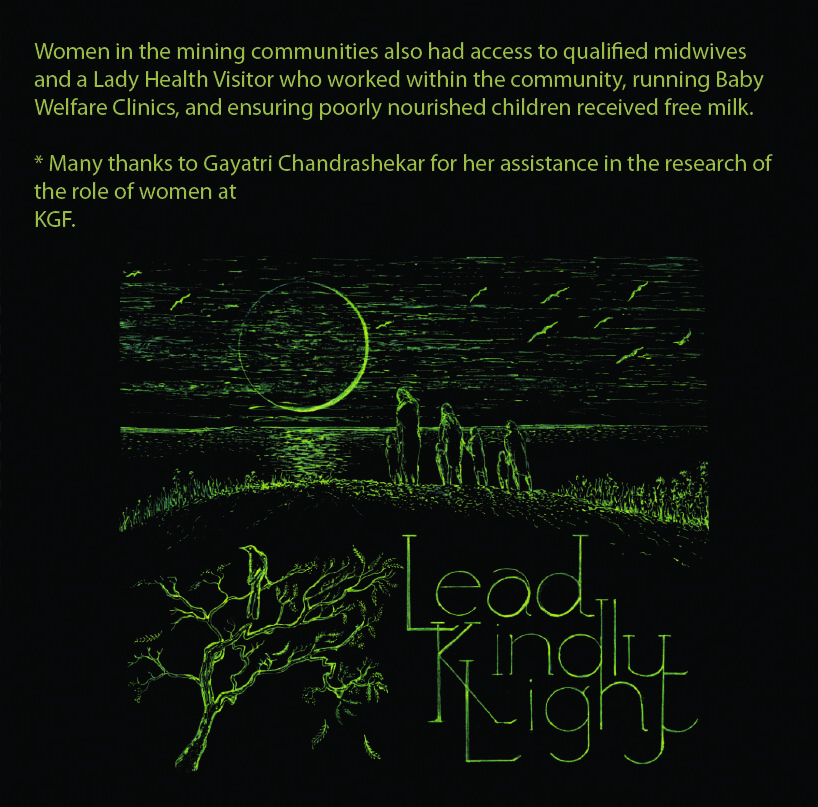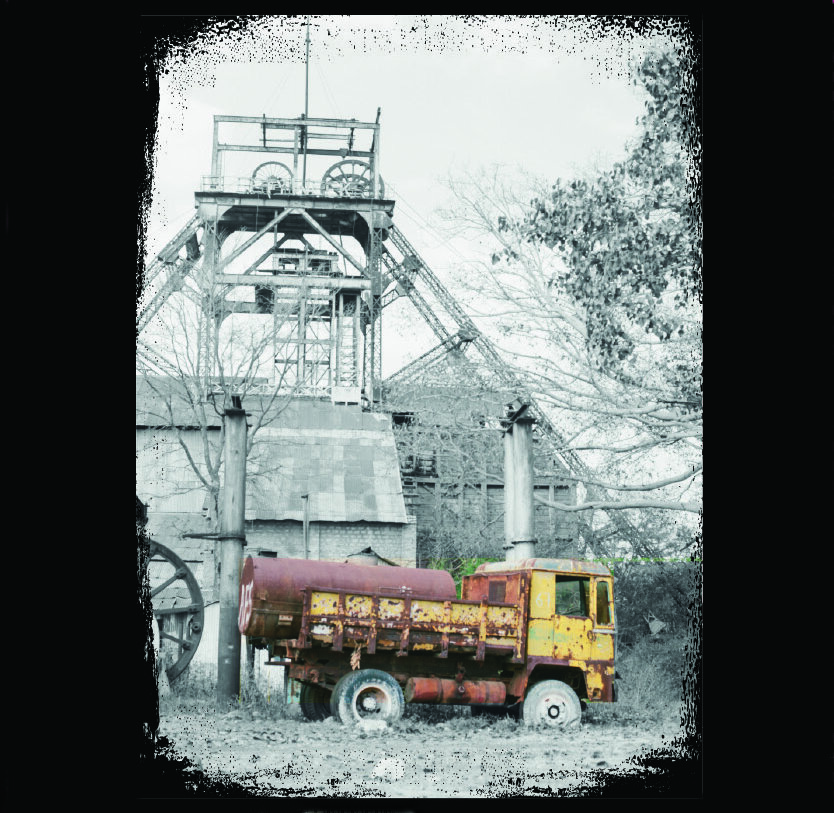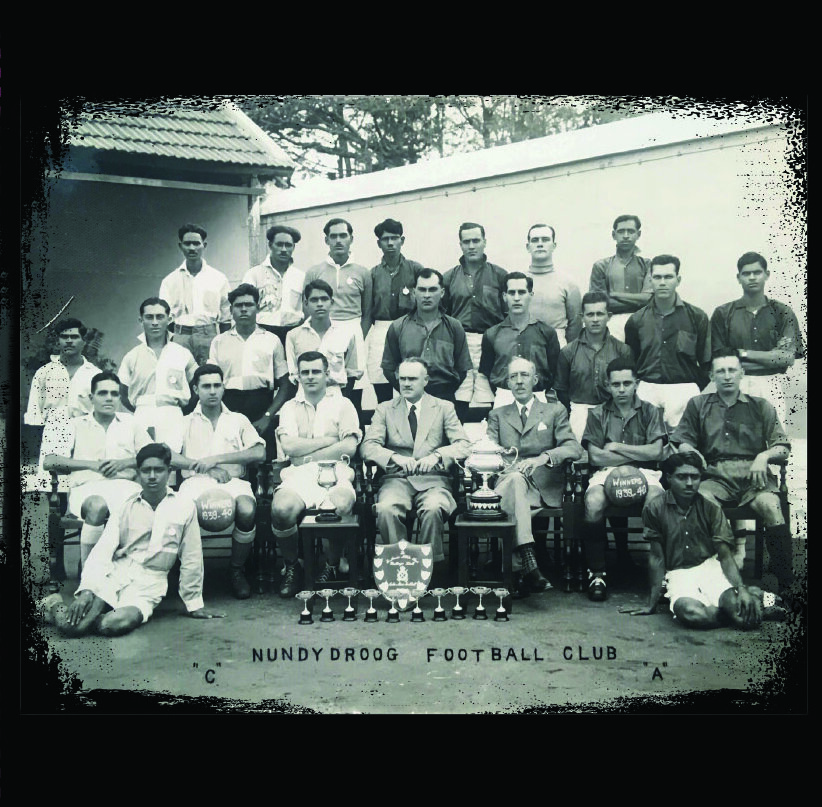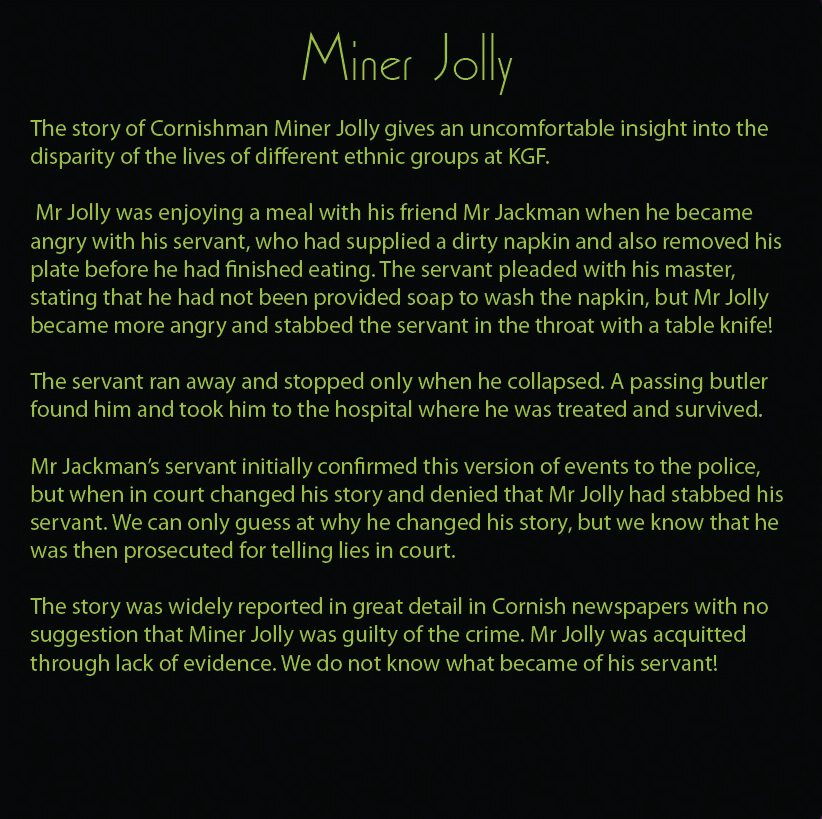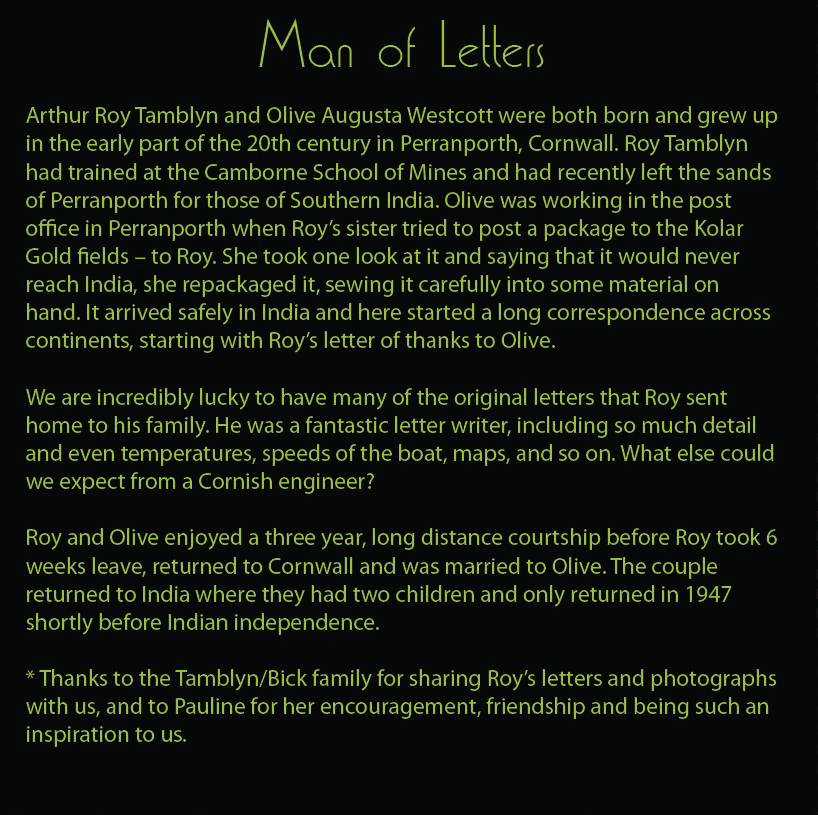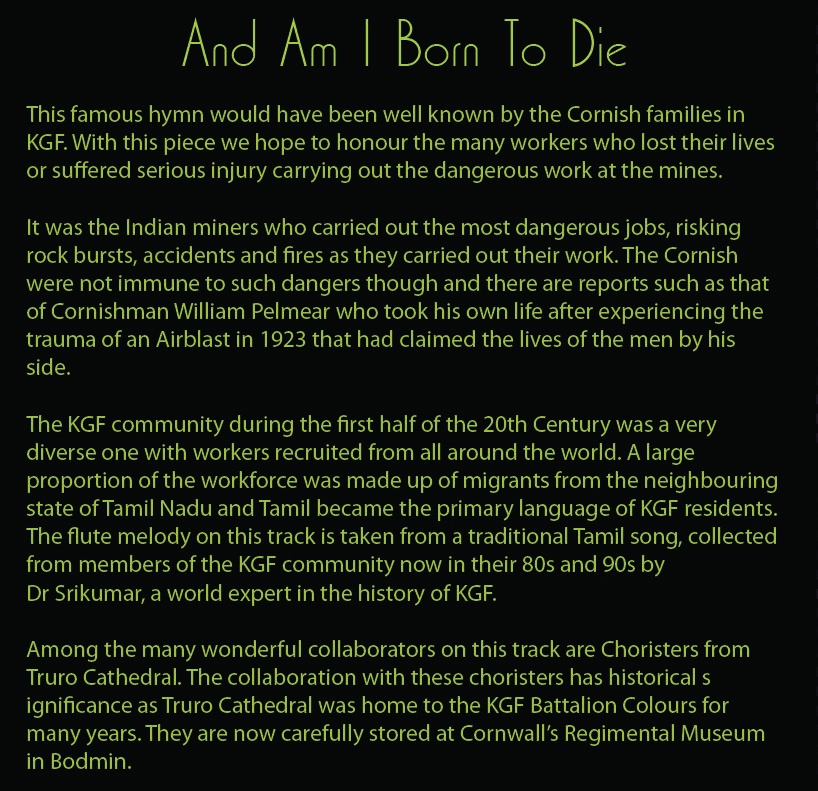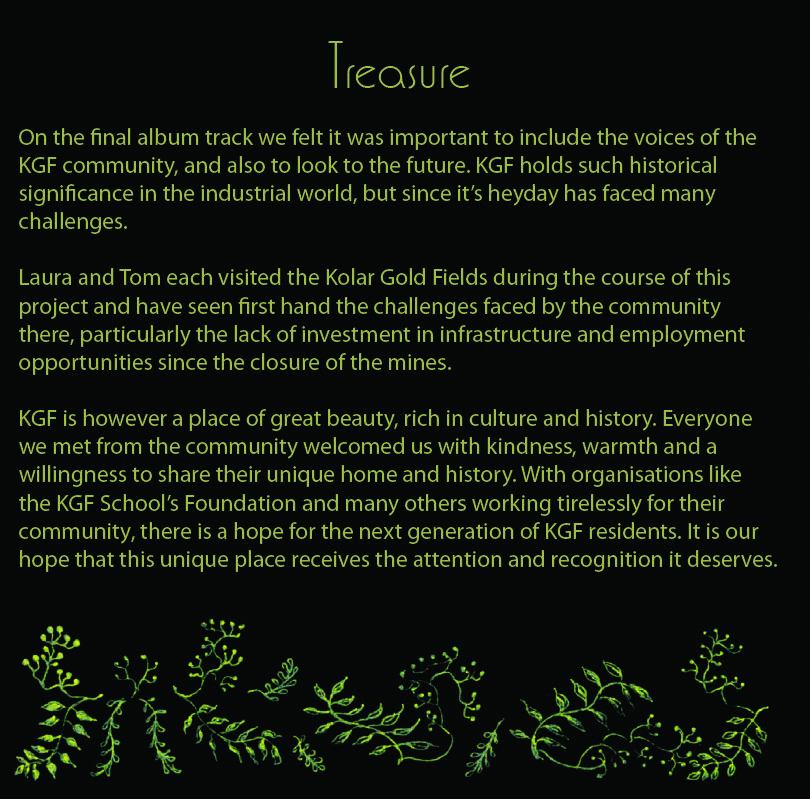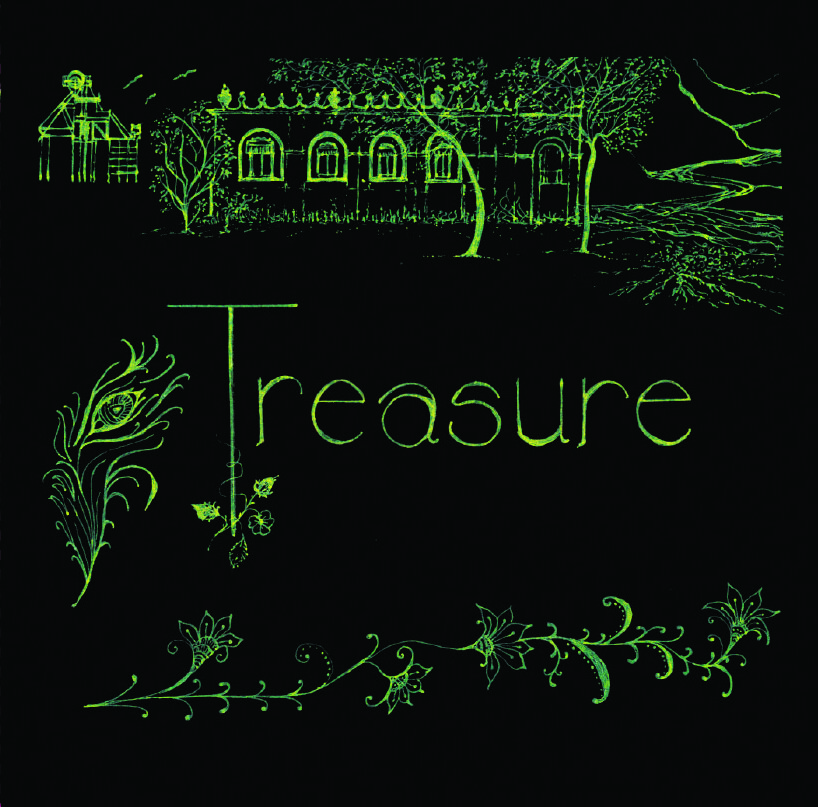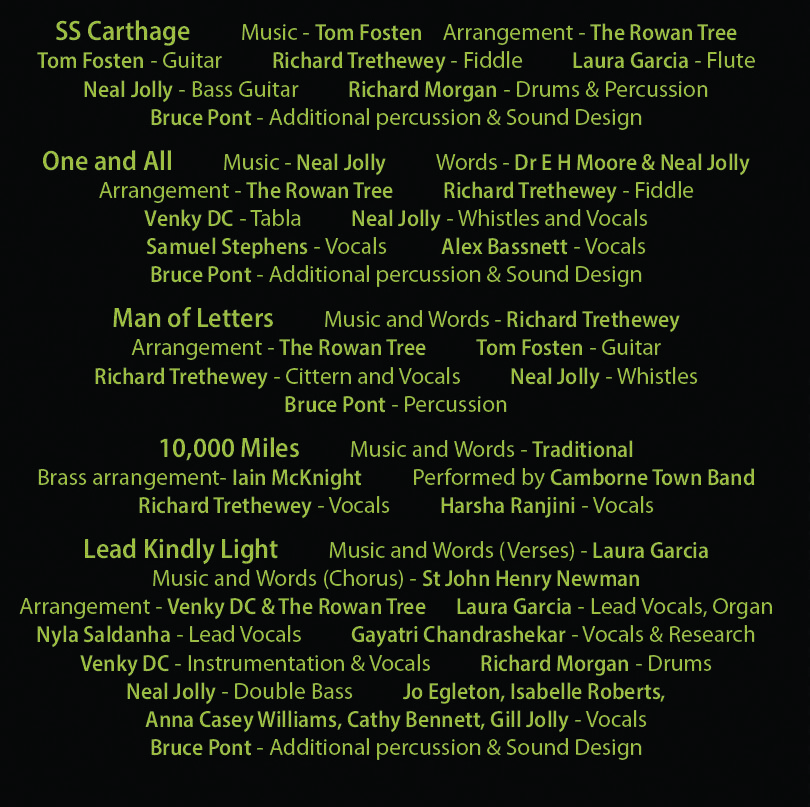On this page you can read the stories of some of the miners and their families who lived and worked at KGF.
WILLIAM PELMEAR
William Charles Pelmear’s story is an incredibly sad one but is a story that highlights the dangerous work the miners were undertaking at KGF. In April 1923 William was underground when an Airblast occurred-
‘Air blasts are defined as the ejection of rocks from main solid mass accompanied by violent explosion and thunderous noise followed by blasts of hot air. The term ‘Air blast’ originated in the Cornwall mines of England’ Dr S. Srikumar Kolar Gold Fields (Unfolding the Untold)
Several of the men by William’s side were killed in the blast and the trauma of the experience devastated him. His mental health was so badly affected that the decision was made to send him home to Cornwall in order to recover. He returned to his wife and family at Carharrack but they became increasingly concerned by his mental state and closely watched him as he showed no signs of improvement. A week after he returned the doctor was called but that afternoon William slipped out of the house unobserved by his family. As soon as they realised he was missing the alarm was raised and they began searching for him. His neighbour, Mrs Bawden had seen him running across the field behind his house and William’s brother George set off after him. His neighbours quickly joined the search but an hour later found a man’s coat on the edge of a disused mine shaft at Spencer Mine, Trevethan and it became very likely William had thrown himself down it. The following day scaffolding was erected and his body was recovered. William was only 36 years old and the West Briton reported ‘Pelmear and his wife were well known and respected in the area’ in an article entitled ‘Afflicted Man’s Sad End at Carharrack’, Thurday 19th April, 1923
ELIZABETH ‘BESSIE’ HAMMILL
Elizabeth Hammill was only 28 when she died in July 1905, but reports of her death tell us a lot about the close knit nature of the Cornish community at KGF, and about the woman herself.
Bessie was a talented and well known singer from Hayle. She regularly sang in concerts and was a member of the Hayle Free Church choir as well as it’s conductor and organist. She travelled to India with her husband Captain A E Hammill, chief underground agent of the Coromandel mine in the October of 1904 and quickly became a valued member of the Cornish community there. She was popular in Wesleyan circles, volunteering her services as organist of Mysore Chapel, helping at their teas, and singing at their sacred concerts. She was also known as a singer at the concerts held by the Royal Army Temperance Association at KGF.
Bessie only lived at KGF for just over 8 months and was either newly pregnant when she arrived or became pregnant very soon after her arrival. The impact she had on the Cornish community and respect she gained during her short time at KGF, her first pregnancy and away from Cornwall for the first time is nothing short of extraordinary. A report on her death in the Cornubian and Redruth times dated 29th July 1905 names many mourners from Cornwall among the funeral party ‘and many of the officers and European employes of the various mines, too numerous to mention’. The Cornishman on 27th July 1905 reported that ‘The amount of respect and esteem in which she was held was plainly evident as the cortege wended its way from the house to the cemetery.’
Bessie died a week after giving birth to her first child, a son named Carl. Reports from the time stated that she died peacefully at home after complications from childbirth despite receiving excellent care and medical attention. She was very likely treated at the renowned KGF Company Hospital which was known for its excellent free medical treatment for all mine workers and their families and the dedication of its nurses.
‘Four free maternity clinics staffed with qualified midwives and health visitors are maintained by the mines and are a special feature of the Mine’s efficient and expanding medical organisation’ Kolar Gold Fields 1960
By 1911 Carl Colmore Hammill (aged 6) had returned to Cornwall and was living with his grandparents in Hayle. He eventually emigrated to South Australia where he lived out the rest of his life. Bessie’s husband Captain A.E. Hammill went on to remarry after Elizabeth’s death, and was still living at KGF with his second wife Jenny with whom he had four children, in 1915, 10 years after Bessie’s death.
PALINI AND THE GIGANTIC WINDER!
The following story is included with kind permission from Dr S. Srikumar and is an extract from his book ‘Kolar Gold Field; (Unfolding the Untold)-
So talented the workers of K.G.F mines were; be it mining, carpentry, black smithy, lathe operating, book-binding, vehicle driving or operating of the wonderful gigantic air compressors and winding engines. All the works were executed by these illiterate and or middle/ high school educated mine workers of different departments with a fine workmanship and with job acumen. All the works in K.G.F mines bears testimony to the British training and discipline.
Here is an interesting story: Palani was a cleaner/ oilman worked in Gifford’s winder house since 1940s and retired. While he was in service, he was not sanctioned a better dwelling hut he was asking for. But, like all the other workers of K.G.F he loved his job and the machinery he was working with throughout his service. He settled at his native village near Katpadi in Tamil Nadu and was doing some agricultural work.
One day, a jeep carrying mining officials entered his village searching for him after tracing his address. The occupants of the vehicle,—the mining engineers and an underground worker/ guide prayed all the way that Palani is alive. On looking at Palani working in a field, the gentlemen felt relieved and the guide shouted! ‘Yov Palani yeru, yeru vandila, Kejiyeppukku poganum.’ ‘ Edhuku?’ ‘Gifford’s winder odalayaam,’ ‘Injineerungo irukiraango, Naan yedhuku!’ ‘Indha kaala pasanga, avangaluku innaa theriyum, Nee vaa’. Meaning: ‘Fast, get into the vehicle Palani; we are proceeding to K.G.F.’ ‘Why?’ ‘Gifford’s winder is not working.’ ‘Engineers are there, what am I to do with?’ ‘What do these modern boys know about wonderful K.G.F mine machinery? Start immediately.’
The engineers went in search of this retired employee of the mines when all their efforts yield no result while trying to set right a technical snag that halted working of the winder for a few days. These modern technicians on the field badly had applied all their book knowledge on the wonderful machine erected decades ago by the British engineers. At the arrival of Palani who was accorded Red carpet welcome, he majestically entered the tall engine house. He saluted the giant machine; stared at all around, scold everybody and guided (commanded) them to refit the removed parts to right positions. He oiled the machine and to the joy of every body switched-on the engine; the engine expressed its joy by working perfectly.
Palani rejected all the praises and prizes given to him mockingly by referring to the incident of not sanctioning a hut to him years ago. “I just treated my sick child; I cured him and I don’t need a return for it.”—was all the reply of Palani.
Few of the machine manufacturers to K.G.F mines were: The English Electric Co. London, Lahmeyer Electric co. of London, Siemen’s brothers Dynamo Works, England, Robert Dagleish &Co. England, Ingersoll Sergeant Drill Co. The General Electric Co., New York, Every workmen of K.G.F were so sincere, honest and faithful and executed their work with utmost dexterity and perfection. They believed in ‘Quality work’ in minimum time than quantity turn-over. It was by their toil that, the industry rose to be one of the best in the world, thus adding pride to India. Hence, the workers of K.G.F always praise their British masters in high esteem who trained them—as also, the British men who worked the K.G.F mines always remembered the workers of K.G.F!
MINER JOLLY
The story of Mr Jolly is an intriguing one. He was alleged to have committed a vicious crime against one of his servants and despite being acquitted, it is impossible to know whether he was in fact innocent, or whether being a wealthy European of higher social standing meant that he was more likely to be believed over his Indian servant. We will never know, but here is his story-
The servant’s story
Mr Jolly was having dinner with his friend Mr Jackman, a fellow miner, when his servant cleared away his plate before Mr Jolly had finished eating. Mr Jolly became angry with the servant and then complained that he had also been given a dirty napkin. The servant replied that he had only been given one napkin for the whole week and had been given no soap to wash it. Jolly grabbed a table knife and stabbed the servant in the throat, causing a wound that was 2 inches long and an inch deep. The servant ran away, but collapsed, bleeding outside the Assay office. A Butler was passing and helped the servant to the police station and he was then taken to hospital. The servant of Mr Jackman confirmed this version of events when interviewed by the police.
The courtroom
In court Mr Jolly’s servant repeated this version of events which were wholly denied by Mr Jolly himself. When Mr Jackman’s servant was called as a witness he changed his story claiming he had not seen Mr Jolly attack his servant at all. The magistrate ordered that Mr Jackman’s servant be prosecuted for perjury after changing his story. Mr Jolly was acquitted on the grounds that there was no evidence to link him to the crime and the magistrate concluded that the servant had concocted the whole thing in order to extort money from the accused.
WILLIAM GEORGE EUSTICE
William was one of the first Cornishmen to travel out to the Kolar Gold Fields. Carpentry was his trade, but he also became landlord of the Lion and Lamb pub, Ashton, Helston, after inheriting it from his father in law Edmund Truscott. In 1887 a mine speculator named Mr St.Stephen visited Helston looking for ‘skilled and steady’ men to go to Mysore and develop a gold mine. Half a dozen men were chosen, including William who at one time had also worked in Brazil. A few days after being selected, the men met at either the Lion and Lamb, or William’s home and enjoyed ‘a good meal and a convivial evening, in the course of which it was resolved, from departure to return (if God spares their lives), that it should be One and All’.*
‘Timberman Eustice’ left his wife Elizabeth and their 5 children in Cornwall and spent three years at the Kolar Gold Fields. It was reported that he returned home for 5 months leave in 1902, aged 60, and it seems he never returned to India. He died in April 1903 aged 61 years, and he passed the Lion and Lamb pub down to his son, Henry.
*Information taken from ‘The Cornish Overseas’ by Philip Payton who quotes an article from the West Briton dated January 1887, and from Michael Eustice who kindly met with us at the Lion and Lamb and provided information on his relative, William George Eustice.
